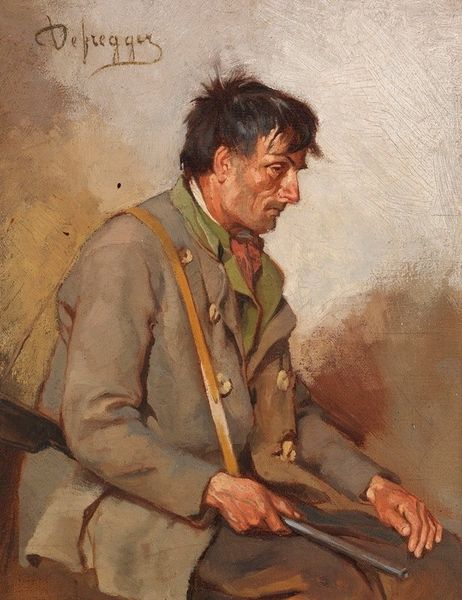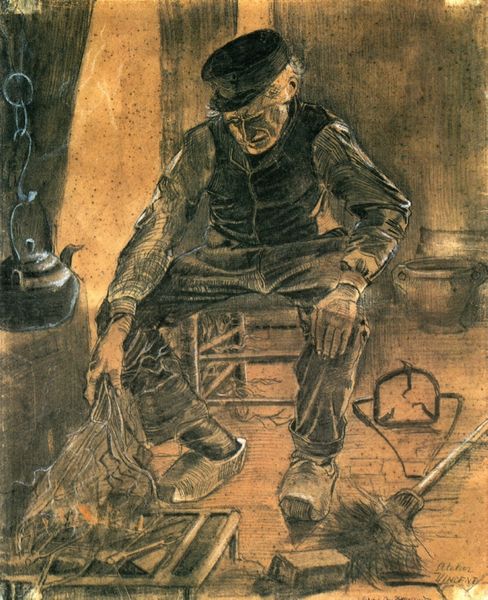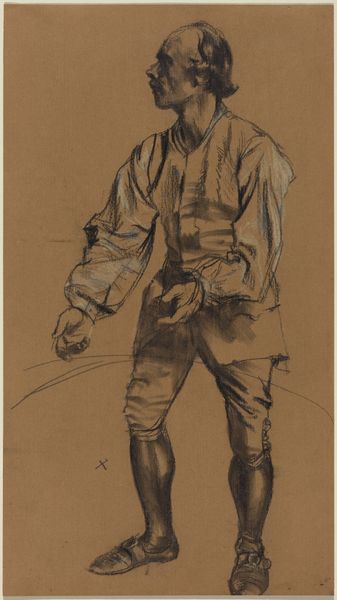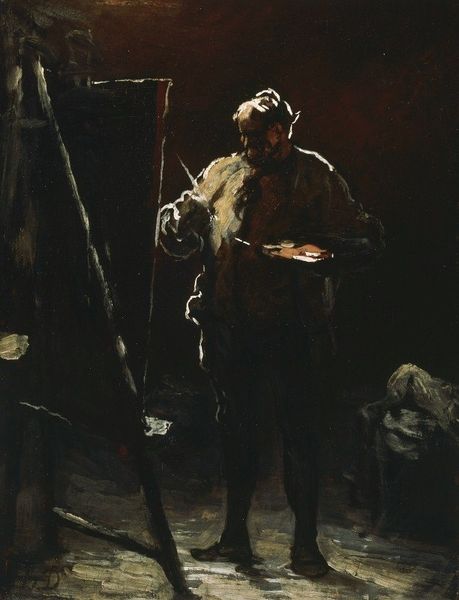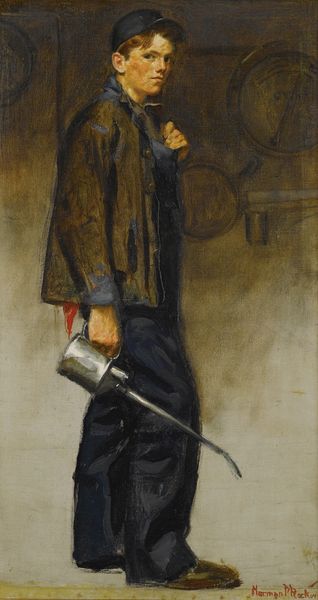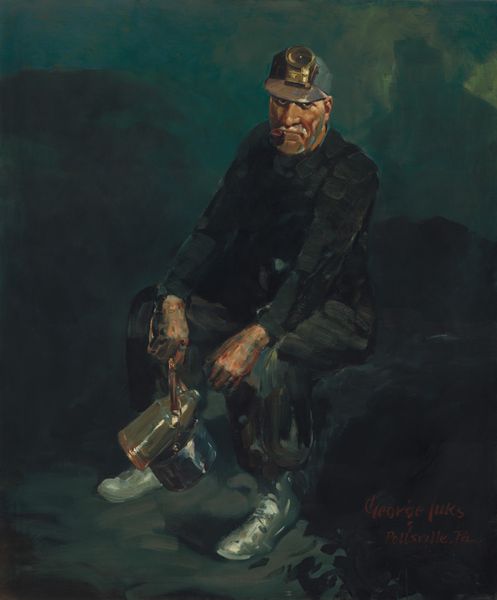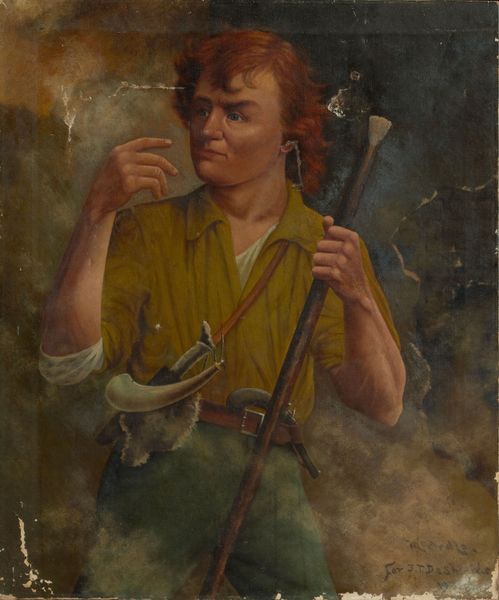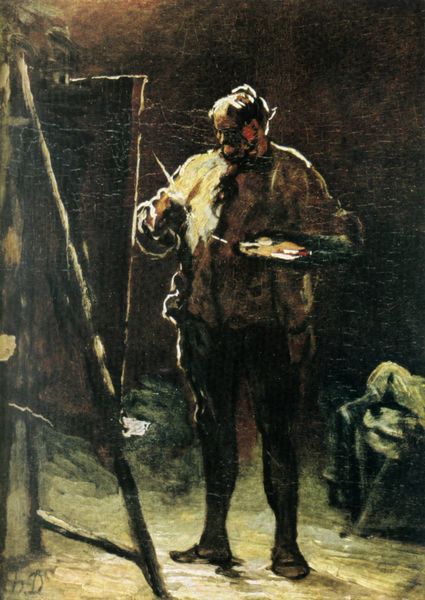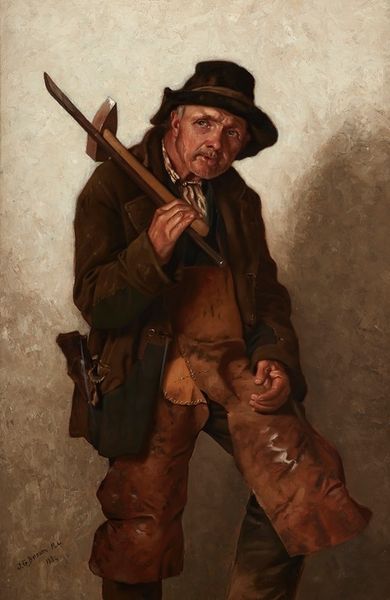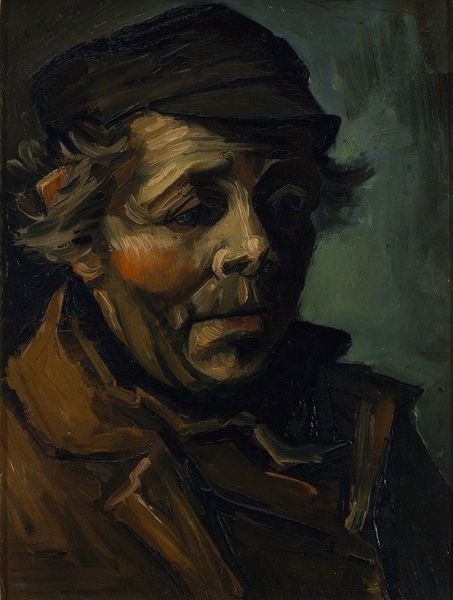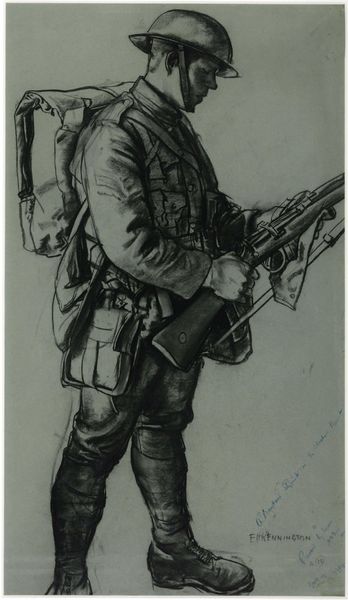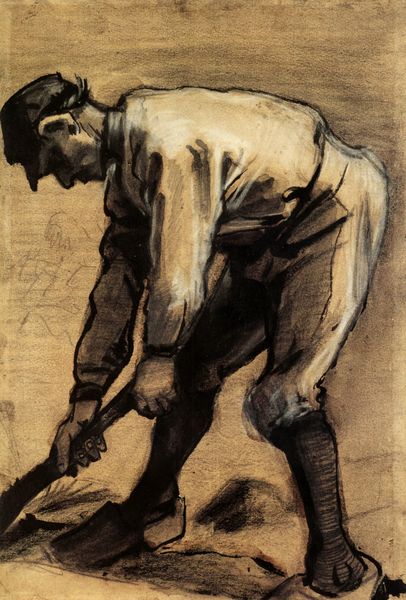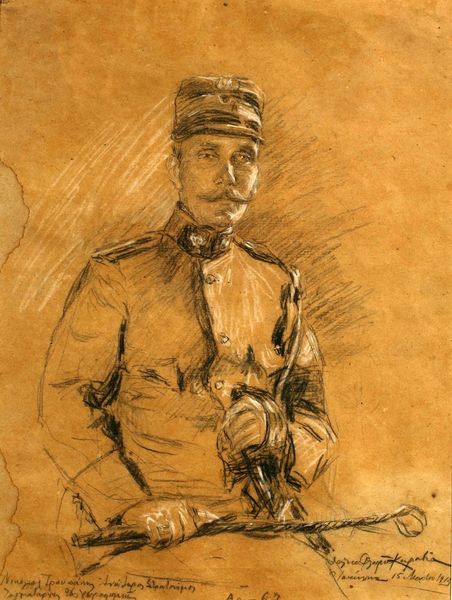
Dimensions: support: 629 x 470 mm
Copyright: © The estate of Eric Kennington | CC-BY-NC-ND 4.0 DEED, Photo: Tate
Curator: Eric Kennington's drawing, Raider with a Cosh, part of the Tate collection, immediately strikes me with its somber mood. The figure is caught in a moment of quiet intensity. Editor: Indeed. Look at the rendering of his uniform; you can almost feel the rough texture of the fabric. The cosh itself, we need to consider its construction, the materials used, and its purpose as an instrument of force. Curator: Precisely. Consider the socio-political context of its display. How does exhibiting an image like this shape our understanding of conflict? The figure’s gaze downwards adds to a sense of unease. Editor: And the lighting isolates him, emphasizing the weight of the object he holds. This isn’t just about depiction; it's about the labor of creating this image, a reflection on the making and meaning of war. Curator: Ultimately, it reminds us of the powerful role images play in shaping public memory and engaging us with difficult histories. Editor: A potent reminder that even the simplest materials can convey complex meanings about work, war, and humanity.
Comments
tate 7 months ago
⋮
http://www.tate.org.uk/art/artworks/kennington-raider-with-a-cosh-n04075
Join the conversation
Join millions of artists and users on Artera today and experience the ultimate creative platform.
tate 7 months ago
⋮
Blake’s idea of how Jerusalem, City of Peace, should be built in England is perhaps easier to contemplate for those who remain at home while others fight for it abroad. Set to rousing music, as Jerusalem was by Hubert Parry in 1916, the vision is apparently more attainable. The enduring awareness of successive governments of the gulf between fact and vision in war was one of Blake’s major preoccupations. The inscription on this drawing – ‘Passed by Censor A N Lee, Major’ – shows its subject was officially acceptable. But it betrays a government tyranny in wanting to order man’s imagination. Gallery label, July 2008
